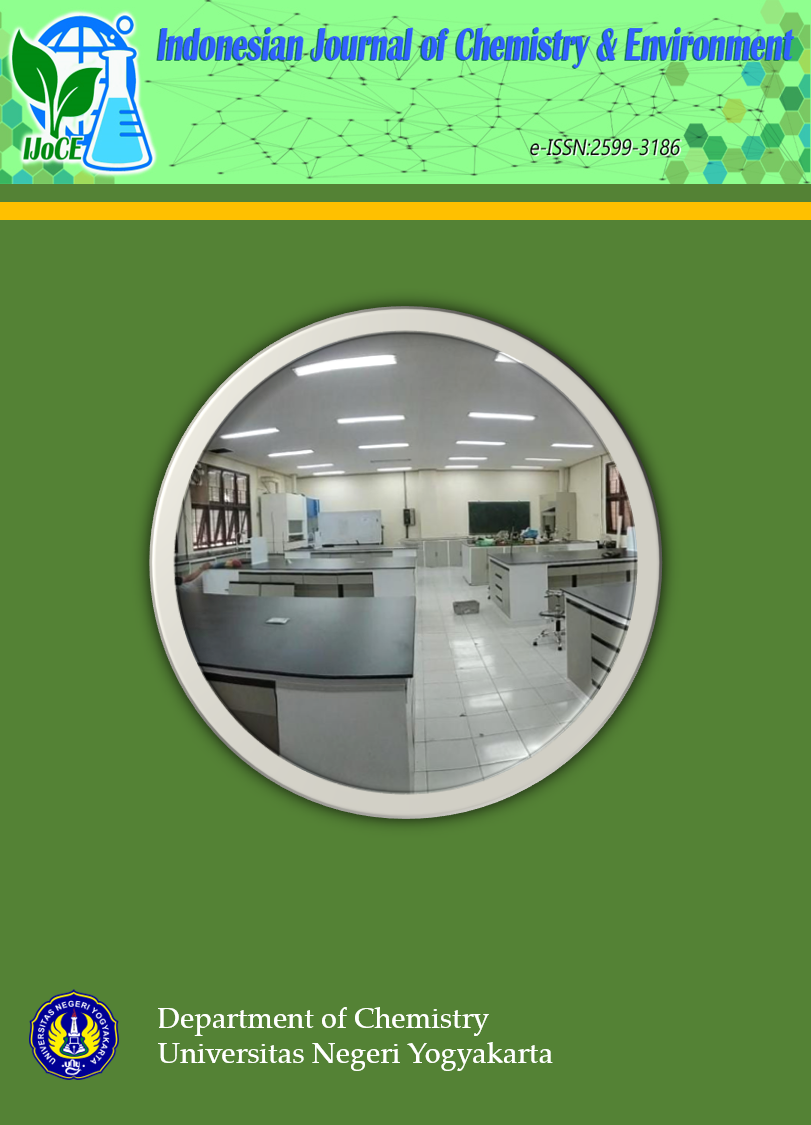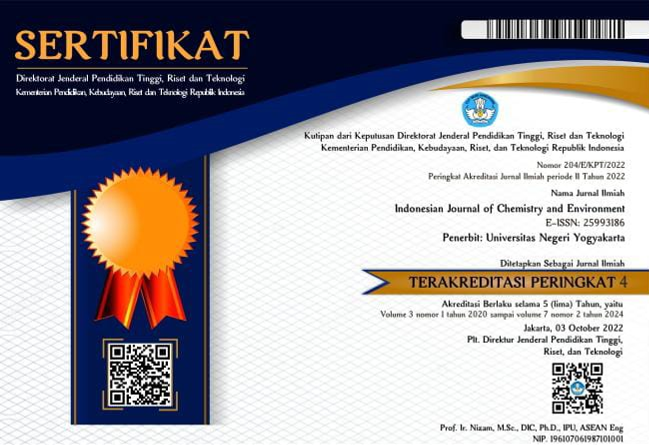The Effect of Activators againts the Ability of Active Charcoal from Nila Fish (Oreochromis niloticus) to Adsorp Cd(II) and Pb(II) Ions
DOI:
https://doi.org/10.21831/ijce.v2i2.38192Abstract
The purpose of this research is to how to make the active charcoal of Nila fishbone and to know effect of the variety activators against the ability of charcoal from nila fishbone waste in absorbing Cd(II) and Pb(II) ions. This research included in the experimental research. Active charcoal making process through 5 stages, namely: sampling, sample processing, the process of carbonation, the activator, and the process of neutralization. Sampling (Nila fishbone) in the restaurant, sample processing in the form of a fishbone drying in the sunshine, the process of carbonation by injecting bone for the furnace and sifted using a mess. The process of with activator HNO3 and HCl, also neutralization by making active charcoal to a neutral pH. Then, specify a contact time of 30, 60, and 90 minutes. The filtrate is further tested by Atomic Absorption Spectrophotometer (AAS) tool to know the adsorption of lead and cadmium ions. The results showed effect of HCl activator on Cd2+ and Pb2+ ions is more effective than HNO3 activator.
Downloads
Published
2021-01-24
How to Cite
[1]
Santi, M.T. et al. 2021. The Effect of Activators againts the Ability of Active Charcoal from Nila Fish (Oreochromis niloticus) to Adsorp Cd(II) and Pb(II) Ions. Indonesian Journal of Chemistry and Environment. 2, 2 (Jan. 2021), 23–30. DOI:https://doi.org/10.21831/ijce.v2i2.38192.
Issue
Section
Articles
Citation Check
License
Authors who publish with this journal agree to the following terms:
- Authors retain copyright under a Creative Commons Attribution–ShareAlike License (CC BY SA) that allows others to share: copy, and redistribute the material in any medium or format, Adapt: remix, transform, and build upon the material, for any purpose, even commercially.
- Authors are able to enter into separate, additional contractual arrangements for the non-exclusive distribution of the journal's published version of the work (e.g., post it to an institutional repository or publish it in a book), with an acknowledgement of its initial publication in this journal.
- Authors are permitted and encouraged to post their work online (e.g., in institutional repositories or on their website) prior to and during the submission process, as it can lead to productive exchanges, as well as earlier and greater citation of published work.










